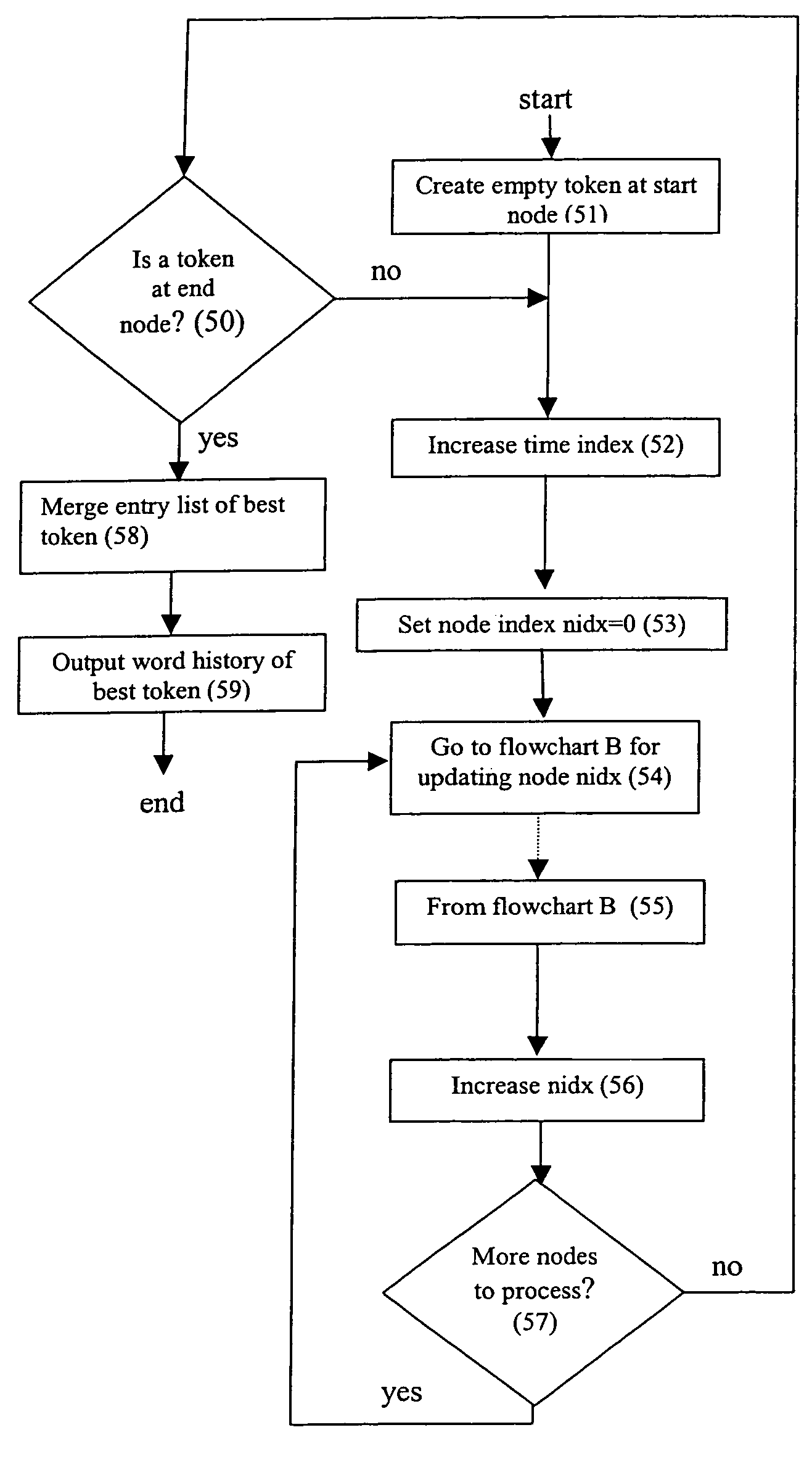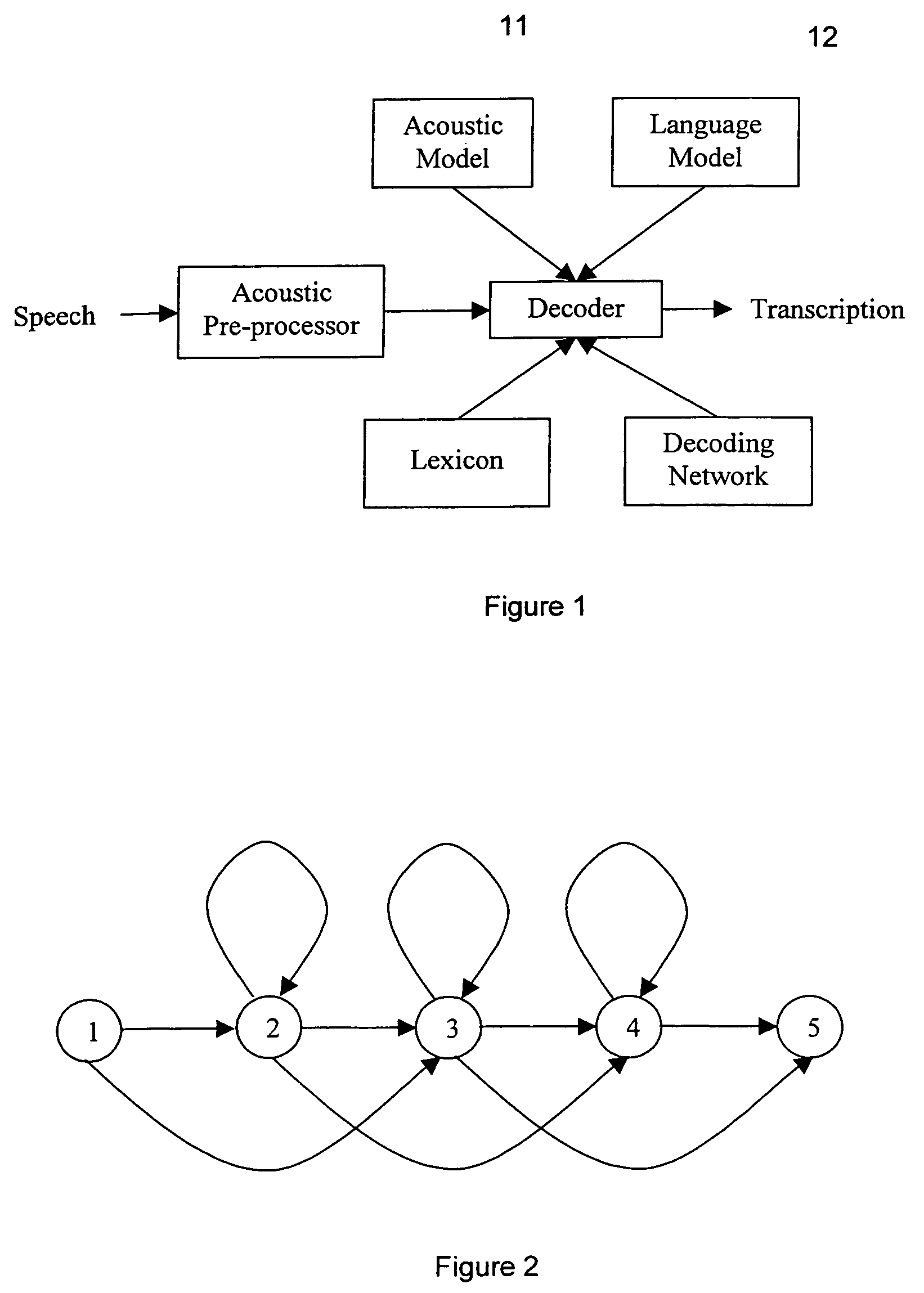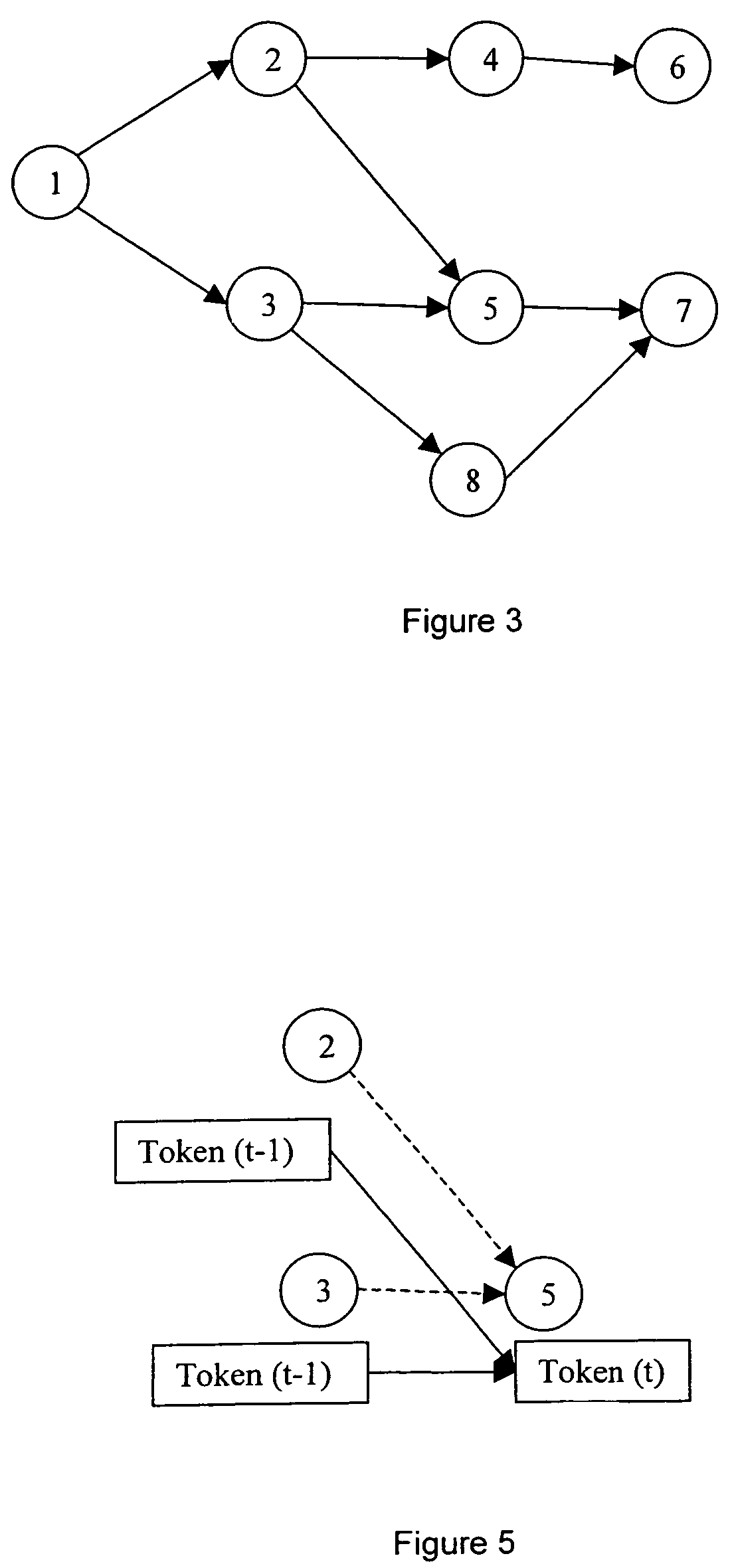Speech recognition system and technique
a recognition system and speech technology, applied in speech recognition, speech analysis, instruments, etc., can solve the problems of reducing the effect of computation, affecting the effect of speech recognition, and requiring significant processing power and memory resources, so as to reduce computation
- Summary
- Abstract
- Description
- Claims
- Application Information
AI Technical Summary
Benefits of technology
Problems solved by technology
Method used
Image
Examples
Embodiment Construction
[0058]The described embodiments are utilised in an Automatic Speech Recognition (ASR) system that takes the digitised audio signal of an utterance as input and provides the text transcription of the audio signal as output. FIG. 1 shows the basic structure of such an ASR system. Generally an ASR system has 6 major components. These are: Referring to the parts of FIG. 1 in more detail, the digitised audio signal of an utterance is received by the Acoustic Pre-processor, where it is converted to a sequence of feature vectors. Each feature vector represents a short segment of speech. A preferred conversion technique is described in more detail in “HTK Book version 3.2” by S. Young, G. Evermann et al, Cambridge University Engineering Department, December 2002.
[0059]Given the sequence of feature vectors from the Acoustic Pre-processor, the decoder attempts to find the “best” text transcription using the other components of the ASR system, being a decoding network, an Acoustic Model, a Lan...
PUM
 Login to View More
Login to View More Abstract
Description
Claims
Application Information
 Login to View More
Login to View More - R&D
- Intellectual Property
- Life Sciences
- Materials
- Tech Scout
- Unparalleled Data Quality
- Higher Quality Content
- 60% Fewer Hallucinations
Browse by: Latest US Patents, China's latest patents, Technical Efficacy Thesaurus, Application Domain, Technology Topic, Popular Technical Reports.
© 2025 PatSnap. All rights reserved.Legal|Privacy policy|Modern Slavery Act Transparency Statement|Sitemap|About US| Contact US: help@patsnap.com



